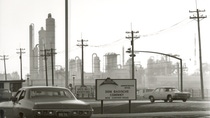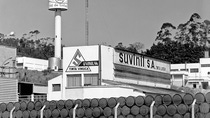Who we are
Equity Stakes - All or Nothing?
Far from it. New markets and products become accessible through a variety of participations. Whether through a majority or minority share, a joint venture or even a complete acquisition, BASF repeatedly expands its portfolio, opens up new markets and merges expertise through participations in companies.
When BASF supplements the product range with consumer-oriented and more highly refined products in the 1960s and 1970s, this is particularly done through acquisitions. Coatings are an example for this, a field of work that BASF enters in 1965, and which today is grouped under the umbrella of BASF Coatings GmbH.
An example from the recent history of the company is its acquisition of the Engelhard Corporation in 2006. As a result of this acquisition, the expertise and technology of both companies are concentrated in the field of catalysts, and exhaust gas catalysts are integrated into the product portfolio.
Corporate investments, especially in the 1950s and 1960s, also serve as a ticket to new markets, as exemplified by the establishment of the American joint venture Dow Badische in 1958. The following acquisition of the Wyandotte Chemicals Corporation in 1969 expands activities in the U.S. and at the same time clears the way to the polyurethane field in the North American market. This is paralleled by the entry into the European polyurethane business through the investment in the Elastomer/Elastogran Group (100% ownership in 1971).
Contrary to corporate investments of varying degrees, BASF’s business fields are consolidated through divestments and the establishment of new companies.



